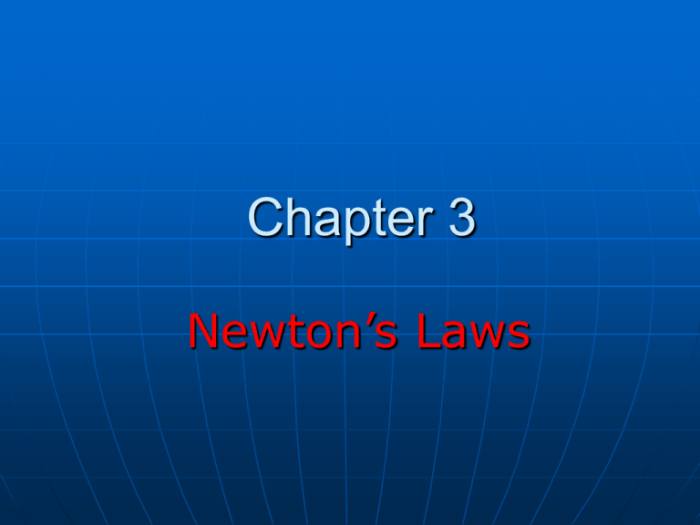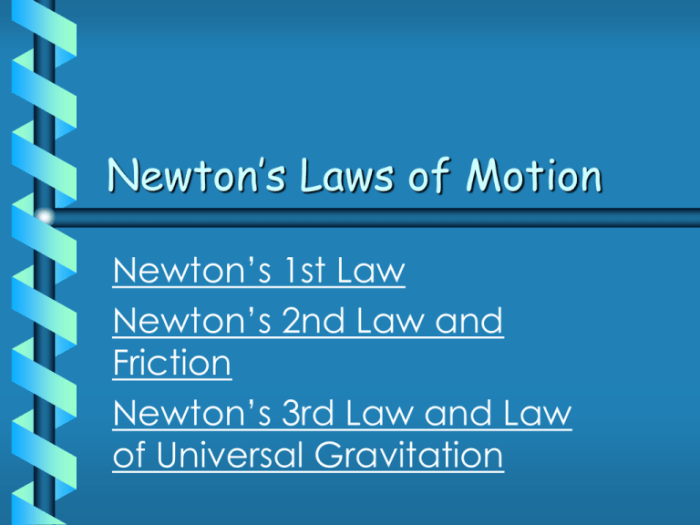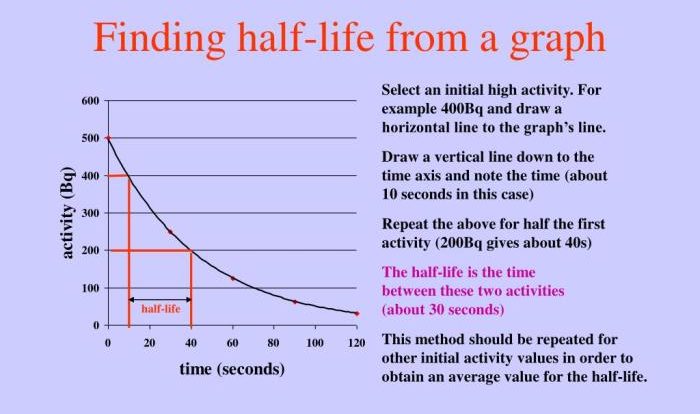Newton’s laws crash course physics #5 – Embarking on a journey into the realm of physics, we present “Newton’s Laws: A Crash Course in Physics #5.” This comprehensive exploration delves into the fundamental principles governing motion and force, shaping our understanding of the universe.
Through the lens of Isaac Newton’s groundbreaking discoveries, we unravel the intricacies of inertia, force, and action-reaction, revealing the underlying mechanisms that orchestrate the movement of objects in our world.
Newton’s Laws of Motion: Newton’s Laws Crash Course Physics #5

Sir Isaac Newton, a renowned physicist and mathematician, formulated three fundamental laws of motion that laid the groundwork for classical mechanics. These laws provide a comprehensive framework for understanding the behavior of objects in motion and have had a profound impact on the development of modern science and technology.
Newton’s First Law of Motion: Inertia
Newton’s first law, also known as the law of inertia, states that an object at rest will remain at rest, and an object in motion will continue moving at a constant velocity in a straight line unless acted upon by an external force.
This principle highlights the concept of inertia, which is the resistance of an object to any change in its motion.
The mass of an object is a measure of its inertia. Objects with greater mass are more resistant to changes in motion. For instance, it is more difficult to push a heavy car than a light bicycle because the car has a greater mass and, therefore, greater inertia.
Newton’s Second Law of Motion: Force, Mass, and Acceleration
Newton’s second law establishes the relationship between force, mass, and acceleration. It states that the acceleration of an object is directly proportional to the net force acting on it and inversely proportional to its mass. Mathematically, this relationship can be expressed as: F = ma, where F is the net force, m is the mass of the object, and a is the acceleration.
This law demonstrates that the greater the force applied to an object, the greater its acceleration. Similarly, the greater the mass of an object, the smaller its acceleration for a given force. The following table summarizes the relationship between force, mass, and acceleration:
| Force (F) | Mass (m) | Acceleration (a) |
|---|---|---|
| Increased | Constant | Increased |
| Constant | Increased | Decreased |
| Increased | Decreased | Increased |
Newton’s Third Law of Motion: Action and Reaction, Newton’s laws crash course physics #5
Newton’s third law of motion, also known as the action-reaction law, states that for every action, there is an equal and opposite reaction. This principle emphasizes that forces always occur in pairs. When one object exerts a force on another object, the second object exerts an equal and opposite force back on the first object.
For example, when you push against a wall, the wall pushes back against you with the same amount of force. Similarly, when a rocket engine propels a rocket forward, the rocket exerts an equal and opposite force on the exhaust gases, causing them to move backward.
The following illustration visually represents the concept of action and reaction:
[Visual representation of action and reaction]
Applications of Newton’s Laws
Newton’s laws of motion have widespread applications in various fields, including engineering, sports, and transportation:
- Engineering:Newton’s laws are used to design and analyze structures, vehicles, and machines, ensuring their stability and performance.
- Sports:Athletes utilize Newton’s laws to enhance their performance. For instance, sprinters apply force to the ground to propel themselves forward, while gymnasts manipulate their mass and acceleration for optimal jumps and rotations.
- Transportation:Newton’s laws govern the motion of vehicles, enabling engineers to design efficient and safe transportation systems.
Historical Context
Sir Isaac Newton (1643-1727) was an English physicist and mathematician who made significant contributions to science, including the formulation of his three laws of motion. These laws were first published in his seminal work, “Philosophiæ Naturalis Principia Mathematica” (Mathematical Principles of Natural Philosophy), in 1687.
Newton’s laws revolutionized the understanding of motion and laid the foundation for classical mechanics. They have since been widely used in scientific research, engineering, and everyday applications, shaping our understanding of the physical world.
Limitations of Newton’s Laws
While Newton’s laws of motion provide a powerful framework for understanding classical mechanics, they have certain limitations:
- Relativistic Effects:Newton’s laws do not account for relativistic effects, which become significant at speeds approaching the speed of light.
- Quantum Mechanics:At the atomic and subatomic levels, Newton’s laws are not applicable, and quantum mechanics is required to describe the behavior of particles.
- Gravitational Interactions:Newton’s laws do not fully explain gravitational interactions, particularly in strong gravitational fields, such as near black holes.
These limitations necessitate more advanced theories, such as Einstein’s theory of relativity and quantum mechanics, to accurately describe the behavior of objects in certain scenarios.
Key Questions Answered
What is the significance of Newton’s First Law?
Newton’s First Law establishes the concept of inertia, stating that an object at rest remains at rest, and an object in motion continues moving at a constant velocity unless acted upon by an external force.
How does Newton’s Second Law relate force, mass, and acceleration?
Newton’s Second Law quantifies the relationship between force, mass, and acceleration, expressed as F = ma. This equation reveals that the greater the force applied to an object, the greater its acceleration, and the larger the object’s mass, the smaller its acceleration.
What is the principle of action and reaction in Newton’s Third Law?
Newton’s Third Law states that for every action, there is an equal and opposite reaction. This principle highlights the interconnectedness of forces, demonstrating that forces always occur in pairs.


